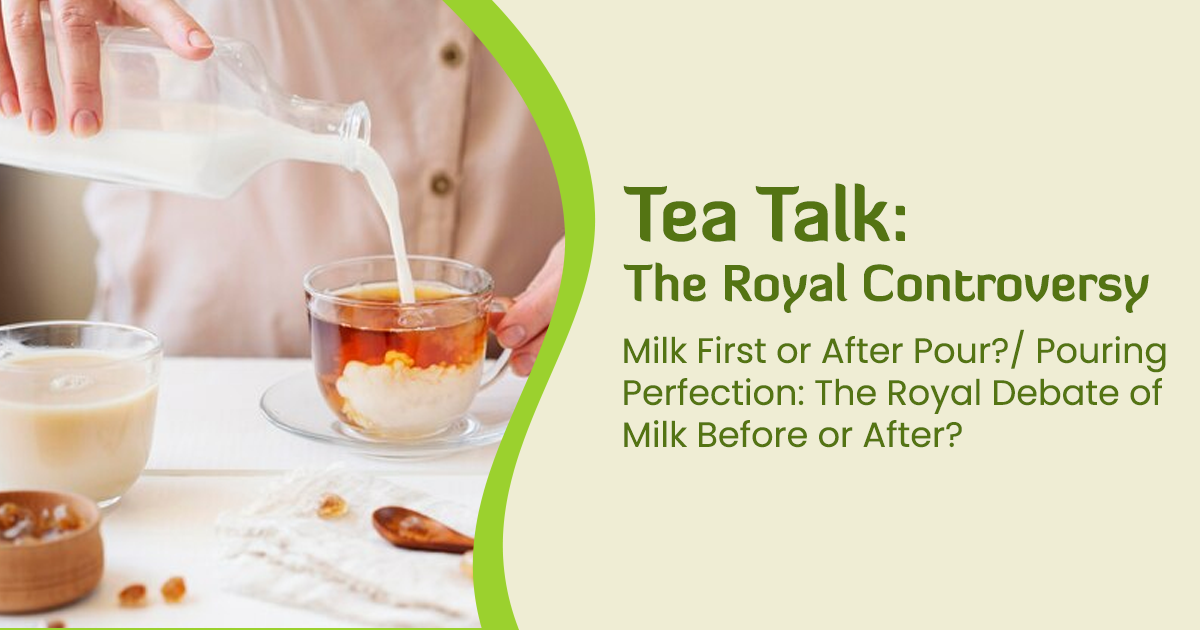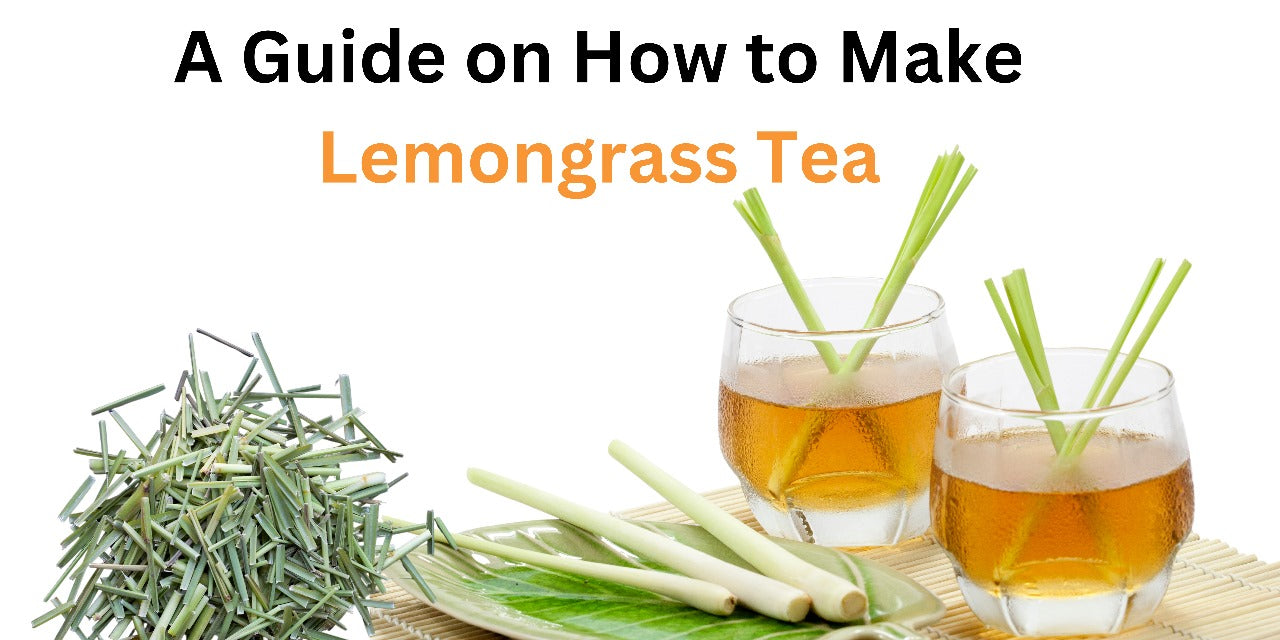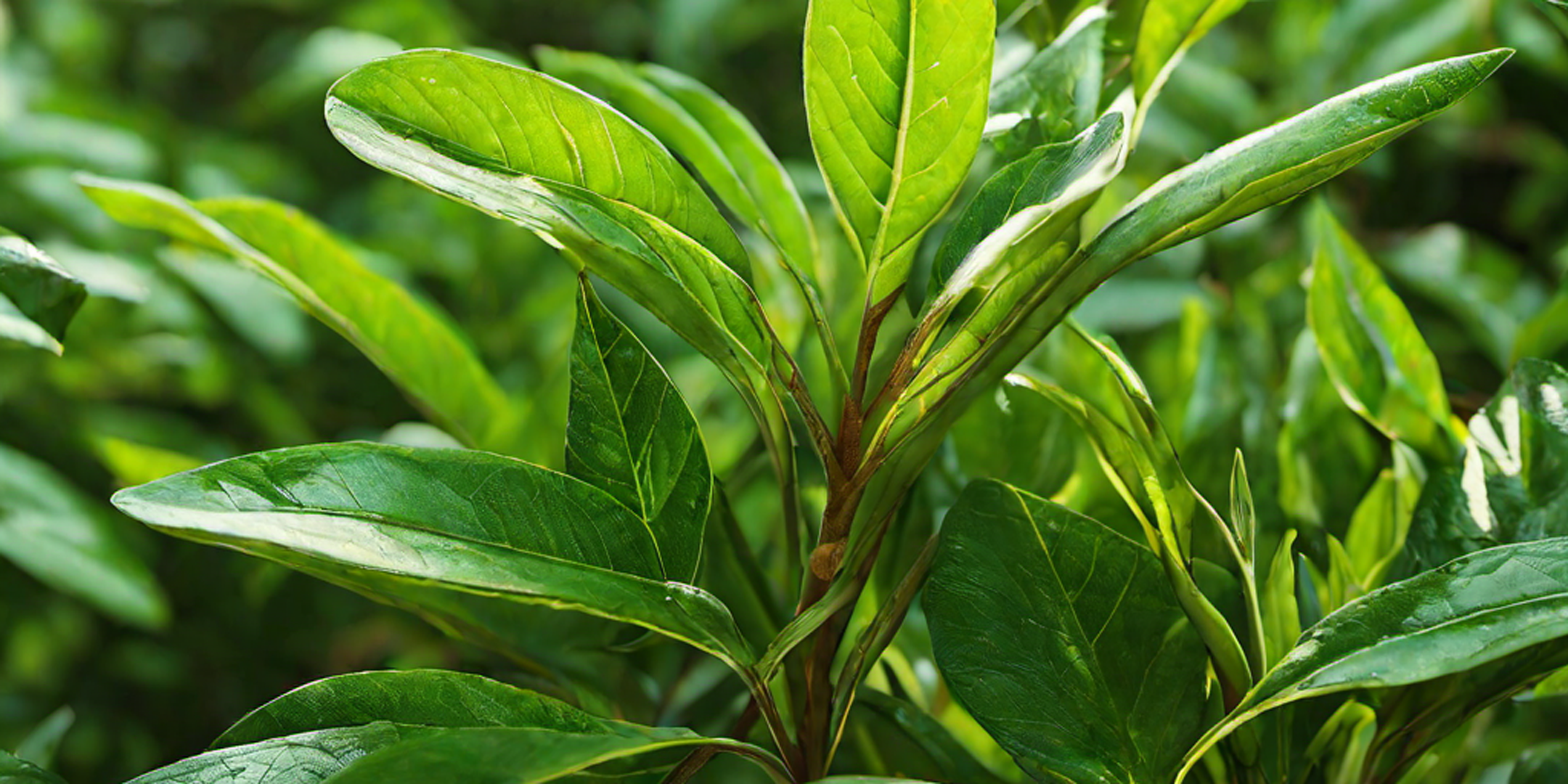Introduction
For tea enthusiasts who crave a sensory journey beyond the confines of a paper teabag, the world of loose tea is a treasure trove of delights. From the rich and robust flavors of black and oolong teas to the delicate nuances of green and white teas, loose-leaf tea offers both a delicious drinking experience and a feast for the eyes. In this comprehensive guide, we will explore the art of brewing loose leaf tea, from understanding the different types of tea to mastering the perfect steeping techniques. Whether you are a beginner or a seasoned tea lover, this guide will take your tea brewing skills to new heights.
What is Loose Leaf Tea?
Also known as "loose-leaf tea," loose tea is precisely what it sounds like - tea that is not confined to a single-serving bag or infuser. Unlike the pre-packaged tea bags found in supermarkets, loose leaf tea allows you to measure and customize the perfect amount of tea for each brew. The beauty of loose tea lies in its multi-sensory experience - the fragrance is more pronounced, and the tea leaves often incorporate dried flower petals, spices, roots, and leaves, Crafting a visually appealing blend of colors and textures. To prepare loose tea, it is placed in a metal or silicone infuser and steeped in hot water for the appropriate amount of time. Once the steeping is complete, the infuser is removed, and the tea is ready to be savored.
The Best Loose Leaf Tea for Beginners
If you're new to the world of loose tea, choosing the right blend can be overwhelming. However, the key is to start with flavors you already love. Whether you're a fan of fruity herbal tisanes, rich and earthy chai blends, or any other flavor profile, you're likely to enjoy them just as much, if not more, when prepared from loose leaves. For beginners, it can be helpful to explore sampler sets or curated collections that offer a variety of flavors in single-serving packets. Tea Forté, a reputable tea company, offers Single Steeps Samplers that eliminate the need for measuring and allow you to sample an array of flavors. Once you've discovered your favorites, you can invest in larger tins of those blends for long-term enjoyment.
How to Steep Loose Leaf Tea
Steeping loose leaf tea is an art that requires attention to timing and temperature. Each type of tea has its unique characteristics, and steeping it correctly brings out its true flavor. Here's a breakdown of the steeping guidelines for different types of loose leaf tea:
- Steeping Black Loose Tea:
Heat water to 208 degrees Fahrenheit
Place one teaspoon of loose tea in an infuser.
Steep for three to five minutes.
Remove the infuser and enjoy!
- Steeping Oolong Loose Tea:
Heat water to 195 degrees Fahrenheit.
Place one teaspoon of loose tea in an infuser.
Steep for five minutes.
Remove the infuser and enjoy!
Heat water to 175 degrees Fahrenheit.
Place one teaspoon of loose tea in an infuser.
Steep for two to three minutes.
Remove the infuser and enjoy!
- Steeping Herbal Loose Tea:
Heat water to 208 degrees Fahrenheit.
Place one serving of tea in an infuser.
Steep for five minutes or longer.
Remove the infuser and enjoy!
The Shelf Life of Loose Leaf Tea
One of the advantages of loose leaf tea is its impressive shelf life. Loose leaf teas have been enjoyed for centuries, and their long-lasting quality is a testament to their preservation. Traditionally, loose tea was tightly packed into bricks or cakes for transportation, and each serving was carefully chipped away until fully consumed. Properly stored in cool, dry places, loose leaf tea can maintain its freshness and full flavor for two to three years. Each package of loose leaf tea is marked with a "Best Before" date to help you enjoy it at its peak.
The Benefits of Loose Leaf Tea
Loose leaf tea has gained popularity in recent years due to its superior taste and variety. Unlike pre-packaged tea bags, loose leaf tea allows the tea leaves to fully expand and release their flavors, resulting in a richer and more complex taste profile. Additionally, loose leaf tea comes in a wide range of blends and flavors, allowing tea enthusiasts to explore different options and create custom blends. By controlling the amount of leaves used per cup or pot, you can create a personalized tea experience every time. Making the switch from tea bags to loose leaf tea can significantly enhance your enjoyment and appreciation of this timeless beverage.
Essential Teaware for Brewing Loose Leaf Tea
To brew loose leaf tea to perfection, it's essential to have the right teaware. Brewing essentials you'll need:
Choose a teapot or teacup with a built-in infuser or use biodegradable tea filters.
Opt for glass, ceramic, or porcelain teapots, as they do not retain flavors.
- Tea Kettle:
Invest in a high-quality tea kettle for consistent water temperature.
Consider an electric kettle with temperature control for precise brewing
- Measuring Spoon
Use a measuring spoon to accurately measure the right amount of tea leaves.
Determining the Ideal Tea-to-Water Ratio
The ideal tea-to-water ratio varies depending on personal taste preferences and the type of tea being brewed. As a general guideline, use one teaspoon of loose leaf tea per eight ounces of water. However, feel free to adjust this ratio to create a stronger or milder brew according to your preference.
Heating Water for Loose Leaf Tea
Various types of tea demand specific water temperatures for the best brewing results. Use the following temperature ranges as a starting point:
- Green tea: 165-185°F (70-82°C)
- White tea: 175-185°F (80-85°C)
- Oolong tea: 180-200°F (82-93°C)
- Black tea: 200-212°F (93-100°C)
- Pu-erh tea: 200-212°F (93-100°C)
Using a temperature-controlled kettle ensures that the water is heated to the precise temperature needed for your chosen tea, resulting in a perfectly brewed cup.
Warming the Teapot and Infuser
Before adding tea leaves and water, it's essential to warm your teapot or teacup with the infuser to help maintain the water temperature during brewing. To do this, simply pour hot water into the teapot or teacup, swirl it around, and then discard the water. This step ensures that your tea brews at the optimal temperature, enhancing the flavors and aromas.
Brewing Loose Leaf Tea
Now that your teaware is prepared and the water is heated, it's time to brew your loose leaf tea. Follow these steps for a delightful cup of tea:
- Place the measured tea leaves into the infuser or filter.
- Gently let the hot water dance over the tea leaves.
- Steep the tea for the right amount of time to get the best flavor.
- Remove the infuser or filter, and your tea is ready to be served and savored.
- Serving and Enjoying Your Loose Leaf Tea Brew
After the steeping process is complete, it's time to serve and savor your brewed loose leaf tea. Consider the following tips for an enjoyable tea-drinking experience:
- Remove the infuser or filter from the teapot or teacup before pouring.
- Pause and savor the aroma and appearance of the tea.
- Initially, taste the tea without adding any sweeteners or creamers to experience its natural flavors.
- Once you've familiarized yourself with the tea's taste, feel free to experiment with additives like sugar, honey, milk, or lemon, according to your preference.
- Sip your tea slowly, savoring the flavors and allowing the tea to envelop your senses.
Re-steeping Your Loose Leaf Tea
One of the benefits of high-quality loose leaf tea is that it can often be re-steeped multiple times, providing you with several enjoyable cups of tea from a single serving of leaves. To steep your tea again, just pour more hot water over the same tea leaves and increase the steeping time by 30 seconds to 1 minute. Keep in mind that delicate teas like green and white tea may lose their flavor more quickly than robust teas like black, oolong, or pu-erh.
Storing Loose Leaf Tea Properly
To maintain the freshness and quality of your loose leaf tea, it's crucial to store it correctly. Follow these guidelines for proper tea storage:
- Use an airtight container to protect the tea from air and moisture.
- Store in a cool, dark place.
- Avoid placing the tea near strong-smelling items, as tea can absorb odors.
- Check the "Best Before" date on the tea packaging for optimal freshness.
- When stored properly, loose leaf tea can last for 1-2 years or more.
Discovering and Experimenting with Loose Leaf Tea
The world of loose leaf tea offers a vast array of flavors and experiences waiting to be discovered. As you become more proficient in brewing and enjoying tea, don't be afraid to explore different varieties, create your own blends, and immerse yourself in the cultural traditions surrounding tea. From traditional tea ceremonies to innovative tea blends, there is always something new to explore and appreciate. Let your tea journey be a personal and enriching experience.
Conclusion
Brewing loose leaf tea is an art that allows you to indulge in the rich flavors and captivating aromas of this ancient beverage. With the knowledge and techniques shared in this comprehensive guide, you are now equipped to embark on a journey of tea exploration. From selecting the perfect loose leaf tea to mastering the art of steeping, your tea brewing skills will continue to evolve and delight your senses. So, gather your teaware, select your favorite loose leaf tea, and begin your tea adventure today. Cheers to the world of loose leaf tea and the endless possibilities it offers!




